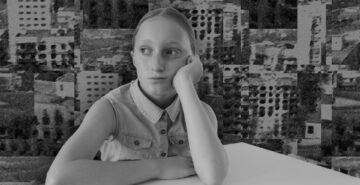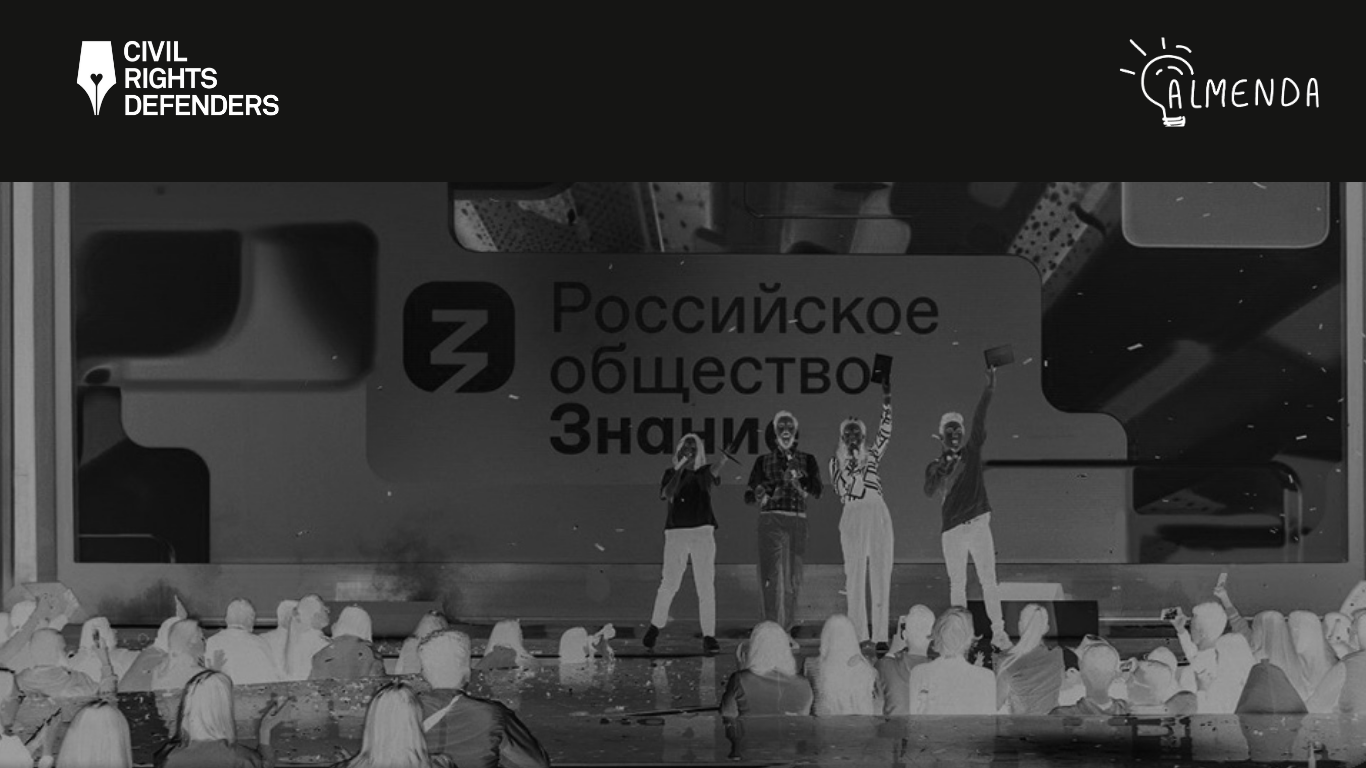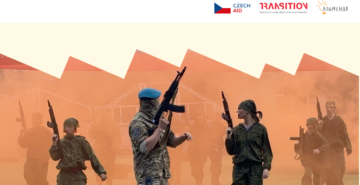

The long way home: how Russian Federation deports and assimilates Ukrainian children and youth
The new stage of the Russian war against Ukraine has signified with a mass transfer of population from the ‘newly’ occupied territories of Ukraine (Kherson and Zaporizhzhia) into earlier occupied territories (Сrimea) or even in Russia. Ukrainians residing on recently captured territories are actively “encouraged” by the occupational administrations to relocate to Russia or Russia-occupied territories – via the promises of financial assistance and special mortgage conditions for purchasing accommodation, safety from active hostilities, and when it doesn’t work, get displaced by force or coercion. These practices also negatively affect Ukrainian children, including most vulnerable of them, such as children deprived of parental care, orphans, children whose parents were killed by the Russian forces and children with disabilities.
It has been observed that Russian officials use the guise of “holidays” and vacation schemes to justify transfer of Ukrainian children to Russia and Russian-occupied Crimea, which results in prolonged stay and de-facto attempted assimilation. According to the “Children of War” web portal, approximately 13 916 children are estimated to have been deported to Russia till 20 January 2023, while as of February 2023 it was possible to return only 125 children to Ukraine. Based on the open-source data, Yale HRL estimated that least 6,000 children from Ukraine ages four months to 17 years have been held at Russian recreational camps and other facilities since 24 February 2022, albeit the total number is unknown and can be significantly higher.
ССE “Almenda ” has actively documented information regarding children’s camps in monthly monitoring reports “Universal soldier” and has comprehensively described how Russia used children’s camps for militarization and attempted assimilation with children’s camps during summer holidays. However, Russian practice of stealing Ukrainian children under the guise of “recreation” was not limited to summer period and will be further explored in this article, as well as legal qualification of such actions.
The long Summer: how camps are used for indoctrination
During Summer of 2022 recreational camps in Crimea were used to destroy Ukrainian identity of children from occupied Crimea and the territories of Kherson and Zaporizhzhia regions occupied in 2022, as well as from the occupied territories of Donetsk and Luhansk regions. The program of those camps was far from a purely recreational character, but rather specifically designed to form loyalty to the Russian Federation, promote military service in the Russian Federation’s armed forces and showcase support for the Russian war against Ukraine.
However, these practices resumed in the new school year, as in September 2022 information regarding the new wave of departure of children from Kherson and Zaporizhzhia regions to the recreational camps in Russia and temporarily occupied Crimea began to appear. To facilitate this process, the dates of the school holidays were changed accordingly by the occupational administrations. According to the order of the so-called “administration of Kherson region”, the school autumn break has been extended until 25 October 2022 and first shifts in the recreational camps for mentioned categories of children have started on 11 October 2022.
According to the Russian Deputy Prime Minister Marat Khusnullin, several thousand children from Kherson region were hosted in recreational camps in Russia [and occupied Crimea] during Autumn 2022, and some were “evacuated” (which in Russian’s newspeak is used as an euphemism for ‘deportation’) along with educational institutions. Children from Kherson and Zaporizhzhia regions were identified at the [temporarily occupied] Crimea, Krasnodar,Stavropol and Rostov regions (Russian Federation). The identified locations in the Crimea include: Luchysty [Лучистый], Mechta [Мечта], Druzhba [Дружба], Zdravnitsa [Здравница], Chaika [Чайка], Radiant [Радиант], Artek [Артек], Laspi [Ласпи]. Some children with their parents and children from orphanages from the Kherson region were “accompanied” to Anapa (Kransodar region) by employees of the Ministry of Emergency Situations. However, the exact number of deported children is unknown and geographical scope of deportation destinations can be significantly wider.
Most vulnerable under attack
Some children were simply abducted from the Ukrainian institutions: for example, on 21 October 2022 around 50 children aged from 4 months to 4 years, including children with disabilities were forcibly transferred to Crimea from a Kherson orphanage by the Molodaya Gvardiya branch of the ‘United Russia’ party. The earlier attempt by the locals to transfer children to the Ukrainian government-controlled territory and later to Poland was deliberately sabotaged by the occupational administration. Hence, children were de-facto abducted and their current whereabouts are unknown.
In February 2023 it was reported that some of the children abducted from Kherson orphanages were hosted in the infamous “Yelochka” orphanage (located in the occupied Crimea), which local journalists compare with a “concentration camp” due to continuous mistreatment of children by the staff. Per working program of the camp, Ukrainian children can also be subjected to “patriotic education” conducted by the camp’s staff, that should teach on Crimea being located “is in the south of Russia” and make feel “as a citizen of multinational Russia”. These children are also under a risk of adoption, due to the simplified procedure introduced by Vladimir Putin and curated by Mariya Lvova-Belova as the child’s ombudsman. It is estimated that at least 400 Ukrainian children, including those who have living parents or legal guardians in Ukraine, have already been adopted by the Russian families. That does not only constitute a grave violation of the children’s rights during armed conflict in the context of prohibition of abduction, but is de-facto demonstrating a pattern of attempted assimilation within the policy of the Russian Federation against Ukrainian children.
Point of no return?
Some of the unaccompanied children who arrived in camps in October 2022 still remain in Crimean recreational camps (as of January 2023) and continue their studies, which is facilitated by the so-called “Ministry of Education, Science and Youth of the Republic of Crimea” and “Representative Office of the Kherson region in the Republic of Crimea”. As of January 2023 about 128 children were reported to remain in Evpatoriya camp; in some instances, parents of those children are currently residing at the liberated Ukrainian-controlled part of the region and children are not allowed to return there by the camps’ administration. On 03 February 2023 the so-called “Deputy Governor of the Kherson region” Tatyana Kuzmich visited 103 Kherson children at “Luchisty” camp in Yevpatoriia (Crimea) and 5 children in the “Zdravnitsa” sanatorium (Yevpatoriia), who are accompanied by teachers from Kherson region. Children are said to take part in cultural and educational events and receive training in all subjects of the school course – per Russian curriculum.
It is known about at least one case when camp’s administration refused to let a 14-year-old Ukrainian boy return to this mother in Kherson, allegedly due to her “pro-Ukrainian position”; and another girl was transferred from Crimean camp to Adygeya republic (Russian Federation) without her mother’s prior notification and consent. Parents who wish to reunite with their children, have to go through numerous obstacles to get to the Russian or Russa-occupied territory and bring their children back themselves. Children who returned from these camps mentioned threats from the occupational administrations to give them for adoption in Russian families, psychological pressure with being forced to listen to the Russian anthem and bullying due to their Ukrainian ethnic origin.
Some children who stay in such camps are asking their parents to come visit them in Crimea and it was reported that the so-called administration of the Crimea is ready to facilitate parent’s relocation to Crimea or Russian regions. So, such relocation of children could be an additional instrument to motivate people to further move to Russia or Russia-occupied territories.
“University shifts” program
The Russian President Vladimir Putin in his instructions to the Russian State Council specifically mentioned implementation of “University Shifts” [Университетские смены] programs on the basis of educational institutions of higher education for 2023. The Russian media have recently announced that a new stage of the “University shifts” program will start during Spring break in March 2023 – and will cover Russia and Russia-occupied territories. The program initially started in June-September 2022 with Putin personally ordering the Ministry of Science and Higher Education (headed by Valeriy Falkov) and Ministry of Education (headed by Sergey Kravtsov) of the Russian Federation to implement it. The program is aimed at conducting educational and recreational activities for schoolchildren aged 12-17, including those from the so-called Donetsk and Luhansk “People’s Republics”, and occupied parts of Kherson and Zaporizhzhia regions. It should popularize Russian culture and history and provide career guidance for further admission of Ukrainian children to Russian higher education institutions. The “University shift” program was implemented in 42 Russian universities (6 shifts with around 10,611 children and 840 mentors involved) and arguably has the biggest geographical scope – 27 regions of the Russian Federation, as well as the occupied Crimea. Participants were given educational lectures on the history of Russia and the cultural history of the peoples of Russia, short-term educational intensives (lectures) on the following topics: “History of Russia in the Mirror of Culture”, “Russia’s deed”, “Motherland of the Firsts”, “Russian World”. Specialized shifts were held in the child’s camp in Litvinovo (Moscow region, Russia) under the patronage of Mariya Lvova-Belova, for children from the so-called “new subjects of the Russian Federation” (meaning Kherson and Zaporizhzhia). The program envisaged educational activities helping adapt to the Russian educational standards and visiting meaningful Russian cultural sites; Lvova-Belova noted that the “work” with children will continue even after their departure.
The Government of the Russian Federation allocated funds for the implementation of the project, covering travel, accommodation, and meals, which is an additional stimulus for the people from occupied territories to participate in such projects.
Why would Russia actively facilitate this “relocation”?
But why would Russia spend so much money and resources on children’s camps and recreation? It is known that training in basic school subjects was organized for children and teachers from the Kherson region for “better adaptation” to the curriculum of the Russian Federation, as well as extracurricular and educational sessions to highlight achievements of “successfully developing regions of the Russian Federation”. Regarding cultural component, the walking tours in Sevastopol were conducted in order to familiarize children from “the liberated territories” [referring to Kherson children] with the history of Russia and the “heroic past of Sevastopol”. Deported schoolchildren were also educated about Russian music, science, as well as about Russia in general, its traditions and culture, including the importance of Russian “National Unity Day” and Russian youth movements. The militaristic component was also present, as it’s known about 61 Kherson schoolchildren selected to undergo Summer “cultural and educational programs” in Nakhimov Naval School (Sevastopol, Crimea).
Children were also ideologically influenced by activists of the Russian Youth movements, such as “Bolshaya Peremena” [Большая перемена], “Rossiyskoye Dvizhenie Schkol’nikov” [Российское движение школьников] and “Yunarmia” [Юнармия] who instructed on the traditions and symbols of Russia and talked about the opportunities that participation in children’s and youth movement grants in Russia. Therefore, under the guise of recreation and leisure Russian Federation is building a new tool to not only physically relocate Ukrainian children on its territory (or Russia-controlled territory), but to persuade them to adopt Russian identity and develop patriotic feelings towards Russia.
Conclusions
It is estimated that around 6000 children were forcibly displaced; the exact number is unknown and could be much higher. Some children were deported with their parents; some were separated from them and placed in temporary care institutions or recreational camps – and parents have faced significant obstacles while trying to bring their children back from de-facto Russian captivity. Children in recreational camps are actively trained to adapt to Russian school curriculum and educational system, are actively taught about the history of Russia and its culture and encouraged to feel pride for the Russian state. Russian youth movements are also actively promoting membership among Ukrainian children in recreational camps. Higher educational institutions of the Russian Federation are also actively involved in assimilatory activities for the Ukrainian children, with the “University shift” program popularizing Russian history and culture and promoting studying in Russia.
Russa’s highest political officials, including President Vladimir Putin and profile ministers Kravtsov and Falkov are involved in the process; Mariya Lvova-Belova as the child’s ombudsman is curating projects aimed at forced displacement and assimilation of Ukrainian children, including via adoption.
It can be argued that such practices can fall under the scope of the Genocide Convention and ICC Rome Statute in part of prohibition of forcibly transferring children from one group to another, which is qualified as genocide within the meaning of mentioned agreements. Abduction of children is also considered as one of 6 grave violations during armed conflict defined by the UN Security Council. The attempts to deprive children of their identity and instill loyalty to the Russian Federation are falling under the indoctrination framework, that was comprehensively described in Almenda’s yearly report. “University shifts” program also calls for appropriate attention to the role of Russian higher educational institutions as direct accomplices and service providers of Ukrainian children’s assimilation.
And lastly, the usage of recreation, play and leisure for instilling certain ideas within children’s minds raises a question of whether it is possible under international law to deprive children of the right to develop their own identity under the guise of recreation and leisure. The international community, including national governments, international bodies and judicial bodies must not only take appropriate measures against the persons responsible for the abduction and further assimilation of Ukrainian children, but also reconsider approach as to children’s protection during the armed conflict taking into account the new “instruments” developed by the Russian Fedeation, including abduction and further assimilation at recreational facilities.
This article was produced within the project «EU Emergency Support 4 Civil Society», implemented by ISAR Ednannia with the financial support of the European Union. Its contents are the sole responsibility of CCE “Almenda” and do not necessarily reflect the views of the European Union. #ПрямуємоРазом #TeamEurope #MovingForwardTogether #ISAREdnannia



